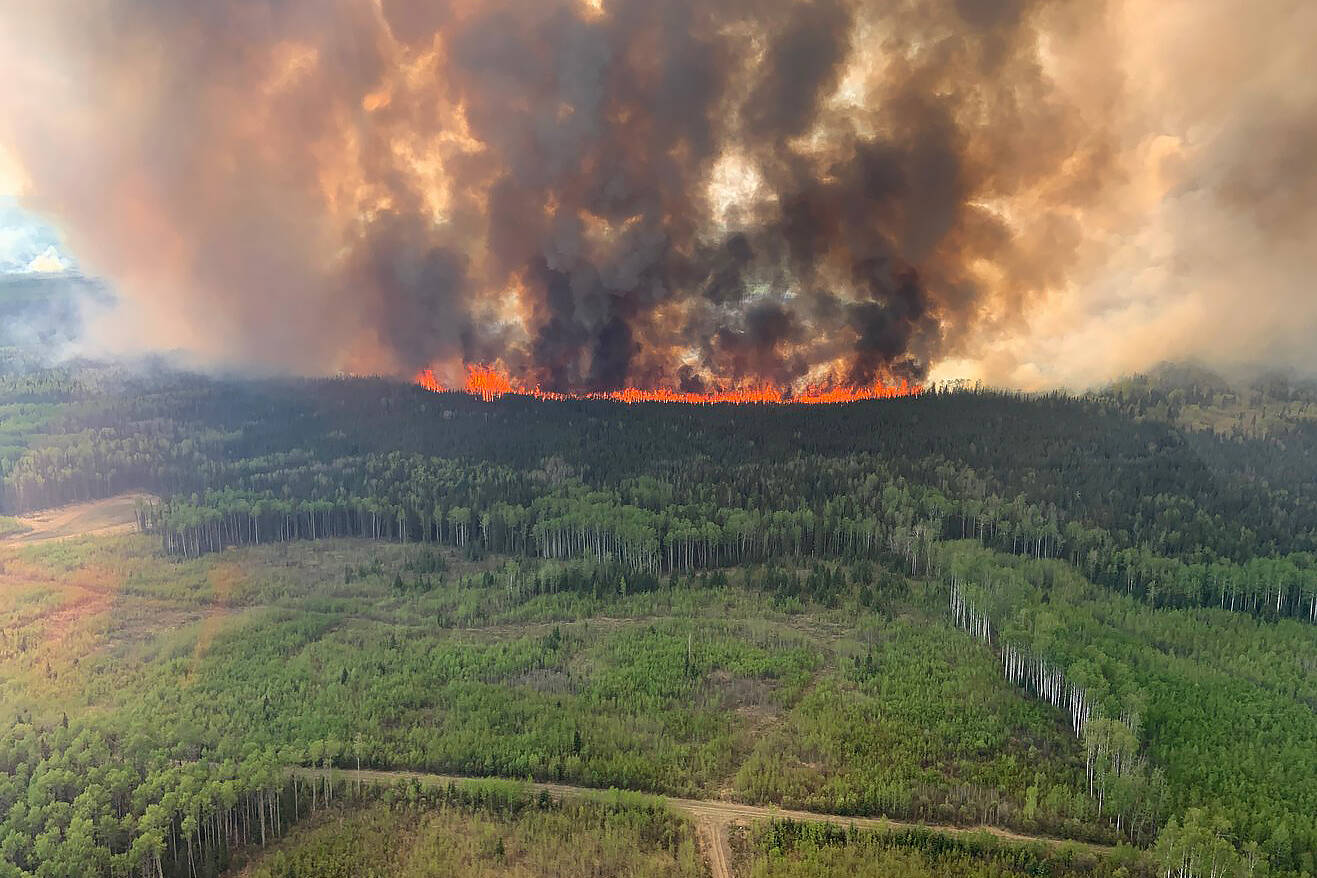Prime Minister Justin Trudeau is set to stop in Edmonton this morning to meet with Canadian Armed Forces personnel who are assisting Alberta in fighting ongoing wildfires.
About 300 members of the Canadian Armed Forces will be deployed across the province to help with the blazes that have forced thousands of Albertans to flee their homes and rural properties.
Wildfires officials are warning that rising temperatures that have been a problem for crews battling wildfires in the province’s north are now also a concern in Alberta’s south.
Josee St-Onge of Alberta Wildfire says conditions in the south aren’t as extreme at the moment, but the province may need to reposition resources so it can be ready to respond quickly to new fires in the area.
St-Onge says fire crews are already in the Rocky Mountain and Calgary forests in the south, and could be bolstered with resources from the north, or from outside the province, if fires break out and grow there.
The number of evacuees in Alberta grew to more than 19,300 on Sunday, with 24 of the 87 active wildfires considered out of control.
Officials say hot, dry and windy weather has pushed fire conditions even further into the extreme in the province’s north this weekend, and the situation in the south is now a growing concern.
There were 87 active wildfires in Alberta on Sunday afternoon, with 24 considered out of control.
St-Onge says fire crews are already in the Rocky Mountain and Calgary forest areas in the south, but they could be bolstered with resources from the north, or even from outside the province, if fires break out and grow in the south.
“We’ll be analyzing the situation in the coming days, seeing where the wildfire danger is the highest, and moving our resources around appropriately to respond to any new wildfires that may start in the south of the province,” St-Onge told a news conference on Sunday.
She urged Albertans to remain extremely vigilant by following provincewide fire and off-highway vehicle bans in order to prevent sparking any new fires.
The return to hot and dry conditions following a brief reprieve last week was expected, and St-Onge said there was a corresponding increase in fire activity. However, she said firefighters were able to hold their ground in most areas on Saturday.
But the peak burning period for Sunday, which she explained occurs when temperatures are at their highest and fuels are their driest, was “still in front of us.”
There are over 1,500 Albertans fighting the fires. The province said an additional 200 firefighters from the United States have now joined them, bringing the total number of people from outside agencies assisting in firefighting efforts to more than 800.
St-Onge said crews have been busy building fire guards and containment lines.
“For the vast majority, those are holding so they are in a good position to continue making progress. But we are expecting challenging conditions to continue and that will be the case for the next few days as these hot, dry conditions persist,” St-Onge said.
Colin Blair of the Alberta Emergency Management Agency urged people in areas that are threatened to prepare in advance to evacuate, including having an evacuation kit ready.
“Everyone should know what to do, where to go and how to stay in touch with each other for those who are not together or at home when an evacuation order is issued,” Blair told Sunday’s news conference.
READ MORE: Fire danger continues to be ‘extreme’ in most parts of province: Alberta government

